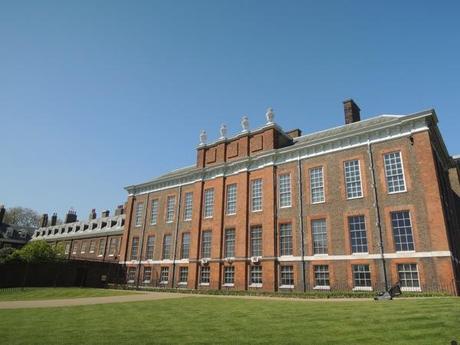
‘In 1727, King George II succeeded to the British throne: a German born, military man with a penchant for punctuality and a glamorous succession of mistresses. He and his wife, Queen Caroline – a witty, intellectually curious and highly educated woman – cultivated a sparkling court at Kensington Palace, which became the talk of Georgian London. George and Caroline used the splendid State Apartments at Kensington Palace to entertain and host dazzling parties to which the great and good flocked, eager to catch a glimpse of the royal family, the great ‘celebrities’ of the age.
This Easter, Historic Royal Palaces presents an exciting new display at Kensington, exploring the decade when the Palace’s fame was at its height – the years between the succession to the throne of George II, and the tragic death of Queen Caroline. Visitors will be introduced to some of its most infamous occupants – from the King’s mistress, Henrietta Howard, to the Queen’s confidant and resident gossip, Lord Hervey. A feast for the senses, the new display will recreate the sights, sounds and even smells of the court, even offering visitors the chance to try their hand at Georgian gambling!
Before King George II came to the throne, his father had radically overhauled the King’s State Apartments at Kensington, commissioning architect and designer William Kent to decorate a splendid series of state rooms, each more opulent than the next. Kent’s interiors were altered over the following centuries, but this year, Historic Royal Palaces has carried out major restoration work on the Presence and Privy Chambers. For the first time, visitors will be able to see these two rooms as their designer intended: the Presence Chamber with its bright white panelling and glorious gilding and the Privy Chamber resplendent with elaborate silk wall hangings and newly cleaned ceiling painting; they are masterpieces of Georgian interior design.‘
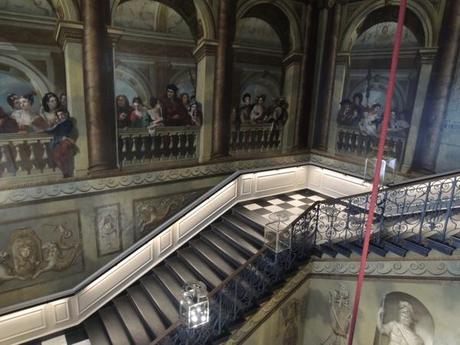
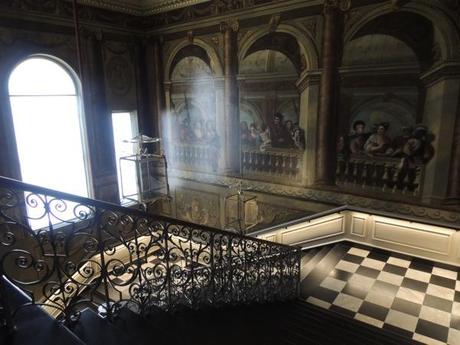
I absolutely love Kensington Palace and so it was with great pleasure (and via a series of bus and hangover related mishaps as I made my way there from Whitechapel early in the morning) that I went there for a special press preview of the new Glorious Georges installation, which seeks to bring the glittering and impossibly glamorous court of George II to vivid life. While the display at Hampton Court was on a very large and magnificent scale, this I felt was a truly sumptuous and atmospheric of the Georgian court as presided over by two of the most sadly and persistently under-rated individuals to ever sit on the British throne.
Whereas George I’s court had no feminine leader, due to the scandalous imprisonment of George’s wife, Sophia Dorothea of Celle for alleged adultery with a handsome courtier, the court of his son and successor, George II was more than ably presided over by his charming, extremely intelligent and incredibly amusing wife, Caroline of Ansbach, who was more than capable of holding her own against the more malicious elements of her husband’s court while at the same time surrounding herself with a choice selection of writers, artists and intellectuals. The lack of a Queen and resulting significance of the King’s series of unattractive mistresses may have rendered George I’s aristocratic circle at Hampton Court Palace occasionally boorish and overly masculine in manner, but there was no danger of this in the rival court set up by his son at Kensington Palace, which was a model of exquisite behaviour, good company and excellent conversation.
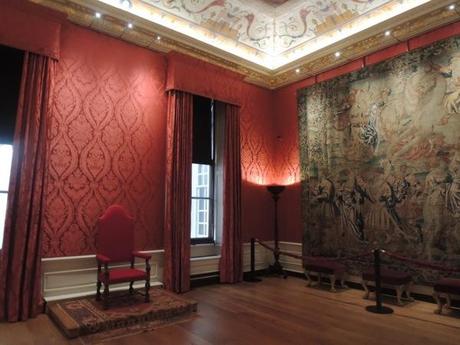
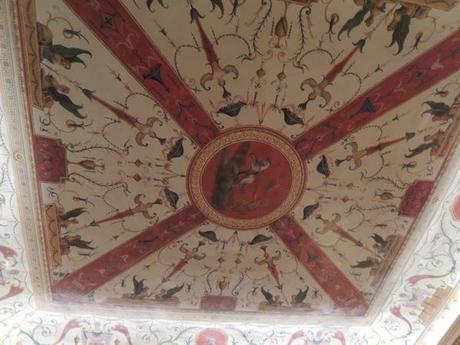
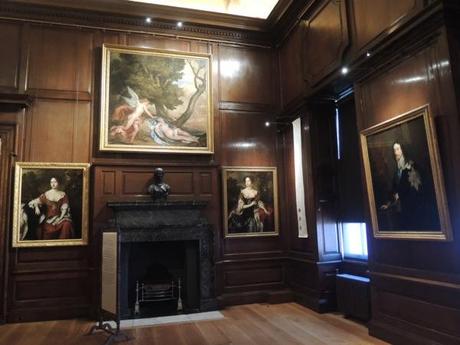
The Georgian display is in the newly refurbished state apartments, which are reached via the impressive King’s Staircase and the first two rooms, the Presence Chamber and Privy Chamber have had an amazing transformation since the last time I saw them back in February, when the builders were still very much in residence and it was all covered in sheets and looking more than a little bit chaotic. It looks absolutely amazing now with glowing crimson silk covered walls, freshly re-gilded ceiling cornices and the wonderfully restored ceiling paintings revealed in all their colourful glory. Congratulations are definitely due to the Historic Royal Palaces team for their hard work in restoring these rooms to their former splendour.
As with Hampton Court Palace there is a trust ‘scratch and sniff’ smell map to guide visitors around the Georgian court from the King’s Staircase, where ‘courtiers arrived at the palace looking – and smelling – their best. Women in fine silk dresses wore makeup and perfumes containing musk, jasmine and lavender. As guests climbed this staircase, the scent of beeswax candles drifted from the new glass lanterns‘ up to the crimson silk hung Presence Chamber where George II would await important visitors on his throne.
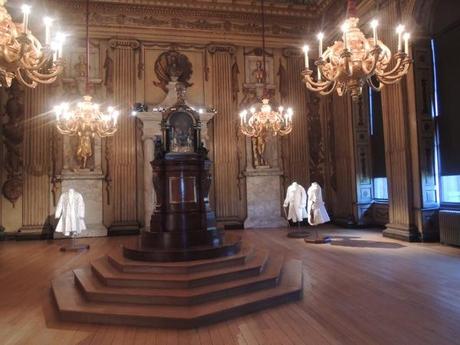

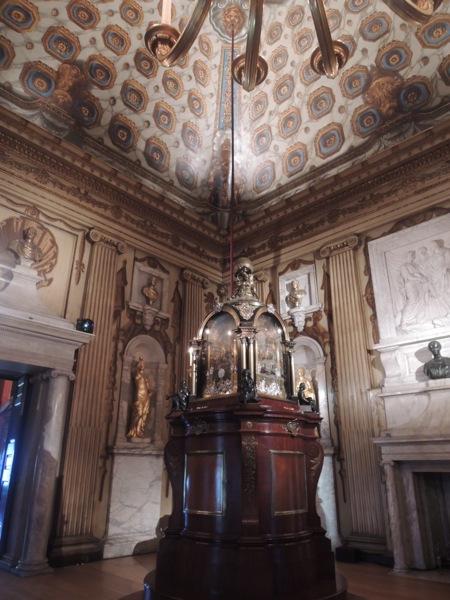
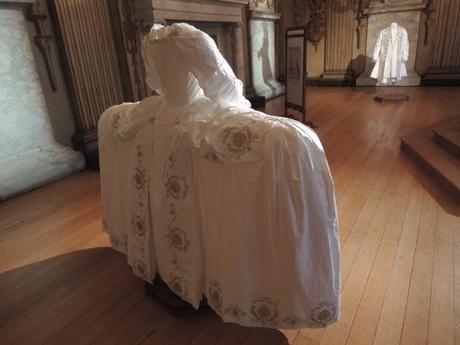
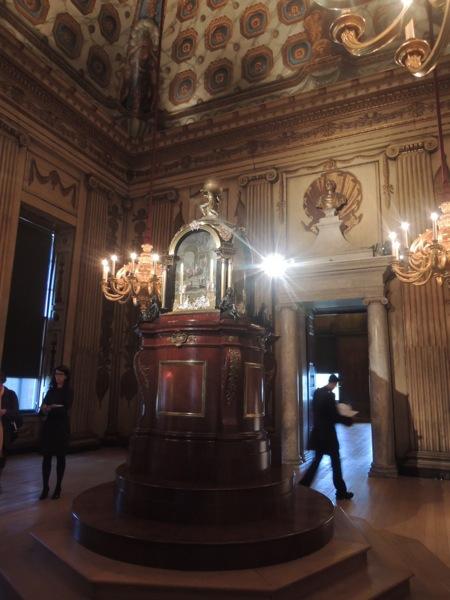
After the Privy Chamber, visitors make their way to the beautiful Cupola Room, a fantasy arrangement of pale marble and gilt, reminiscent of the reception rooms at Versailles. Here, we are told ‘famous musicians including the composer George Frideric Handel, the Italian sopranos Francesca Cuzzoni and Strada del Po and the celebrated castrato Farinelli entertained the royal family and their guests…’ The ghostly figures in their panniered white paper gowns and graceful dancers on the wall evoke the scandalous behavior of Princess Amelia, the King’s dancing mad second daughter who took to the floor several times with a handsome gentleman of the court with whom she was clearly enamoured.
From the graceful beauty of the Cupola Room, visitors move on to the Drawing Room, which was the heart of court life under the Georgians. It was here that the courtiers would cram themselves to gossip, indulge in flirtations, covertly size up their friends and enemies, get drunk on brandy, wine and port and, most importantly, play cards, often losing vast fortunes, family seats, eligible daughters and prized diamond jewelry in the process. Tables have been set up so that modern visitors can also play a hand of Hazard – although hopefully their losses won’t be so great as those that beleaguered and dissipated the fortunes of several leading aristocratic eighteenth century families.
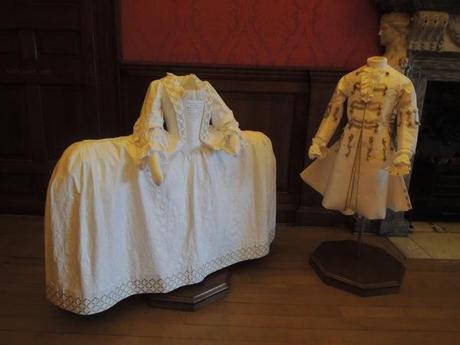
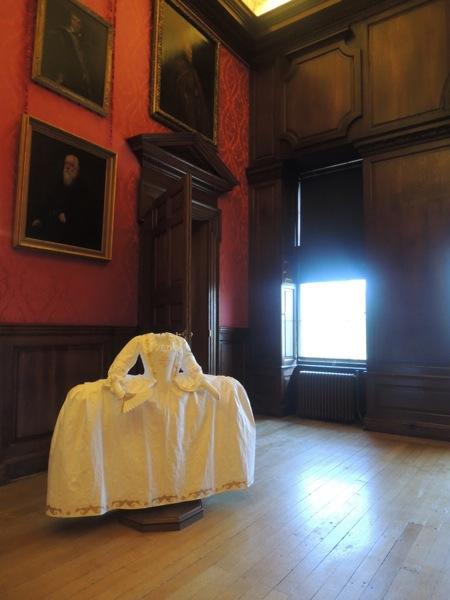
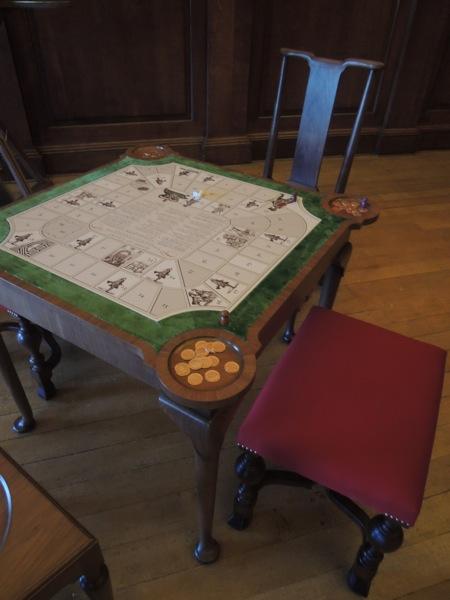
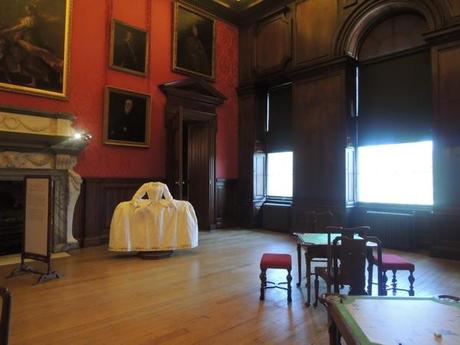
The visitor next steps into the Council Chamber, where a very special surprise awaits them. To evoke the memory of Queen Caroline, who presided over her husband’s court with such dazzling glamour and style, this room has been devoted to the fashionable ladies of the court and on display there is perhaps one of the most fabulous dresses of the period: the shimmering Rockingham Mantua, which has been specially restored for the display.
The Rockingham Mantua was worn by Mary, Marchioness of Rockingham to a court function in around 1765 and is a superb example of the sort of sumptuous finery that court ladies wore at this period with its gorgeous silver lace and embroidery, which must have glowed and shimmered in the light of the thousands of candles that filled the court rooms.
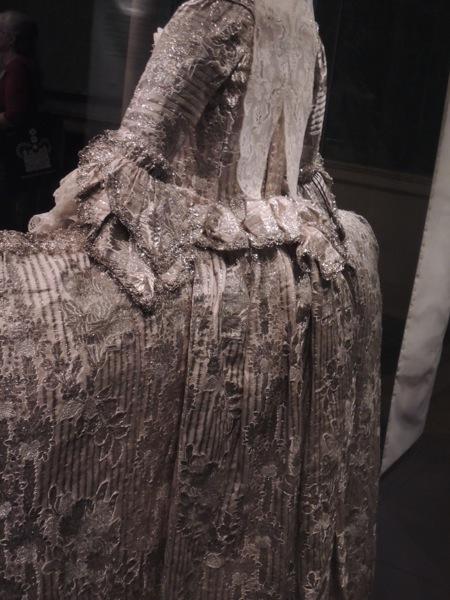
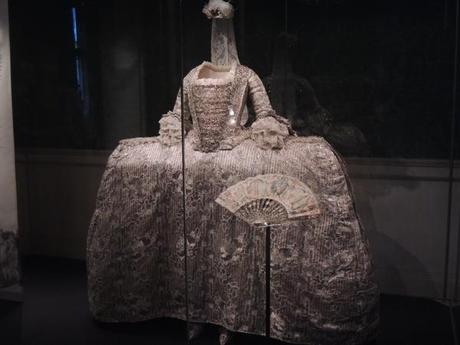
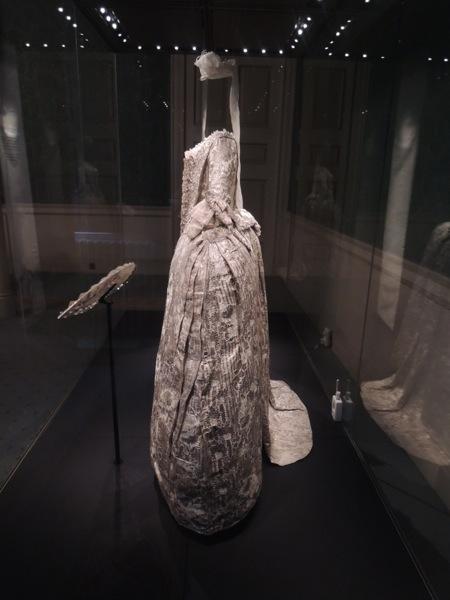
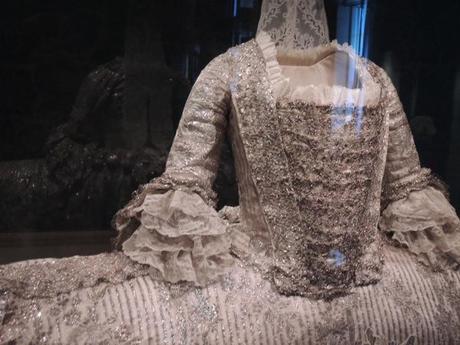
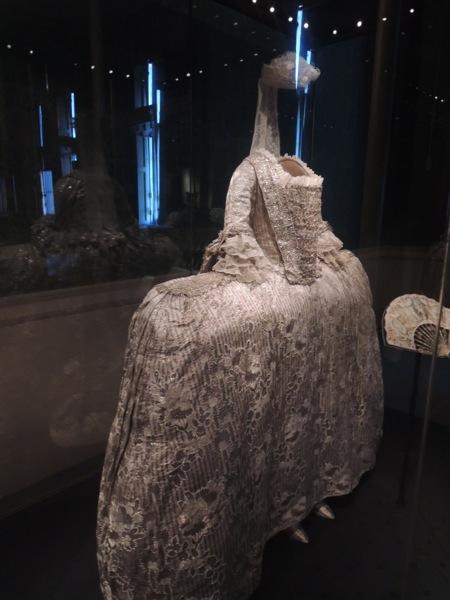
Not only was Queen Caroline exceedingly elegant but she was also blessed with an inquiring mind which prompted her to build a large collection of beautiful and unusual objets d’art, which were displayed in her private rooms at the royal residences. At Kensington, this collection is evoked in the Queen’s Closet, where the visitor can find portraits of the Queen, plans of the gardens that she planned for Kensington Palace as well as, most fascinatingly a book recording the menus of meals enjoyed by the royal family. Ever wondered what Queen Caroline ate for dinner on the 6th of June 1736? Well, wonder no more for it’s all in this book in all of its weird and wonderful glory.
As a life long vegetarian, I definitely balk at some of the items that graced Queen Caroline’s table but it still makes for really interesting reading and I’m really intrigued by the inclusion of cherry dumplings among the savouries as well as ‘Dutch salads’. In fact, it looks like Queen Caroline was very fond of cherries.
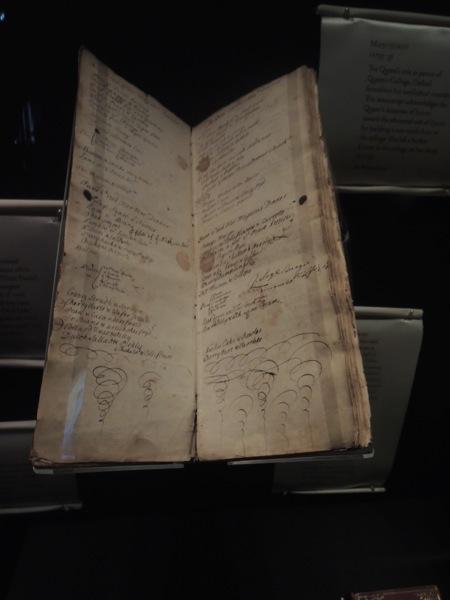
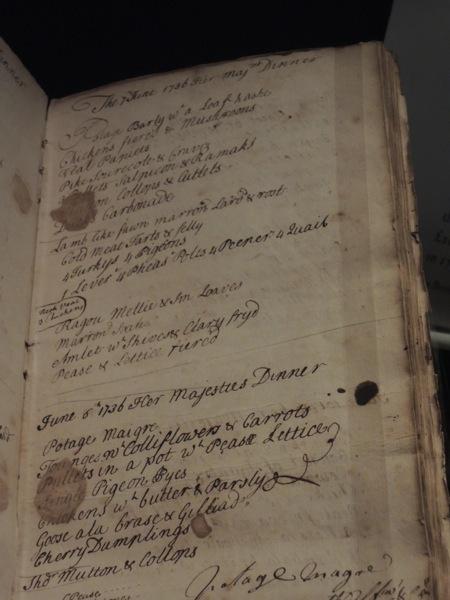
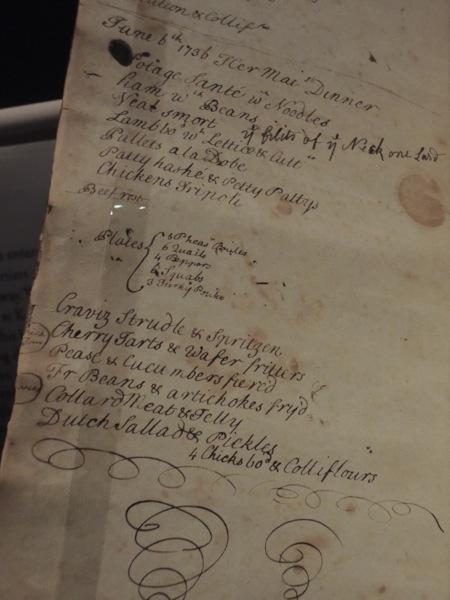
The visit ends with the King’s Gallery, which as always is dominated by Van Dyck’s amazing equestrian portrait of Charles I at the far end. I have a special fondness for this room after I attended a Christmas party in the palace at the end of last year and spent quite a while ensconced in one of the windows having a very enthusiastic (and rather drunken!) conversation about Game of Thrones with one of my friends. It’s a much more sombre affair now though as it marks not only the end of the Georgian court display but also the close of the heyday of George II’s reign after the death of his beloved wife, Caroline. Here, movingly, the visitor encounters a solitary black clad figure: the devastated and mourning King, standing alone in the gallery which in happier times had rung with his wife’s peals of laughter and hubbub of courtly life.
‘As Queen Caroline lay dying, she told the King she hoped he would find a new wife one day. After she died, he insisted that nothing in the palace be changed. He continued to live at Kensington, surrounded by the gardens that Caroline had commissioned William Kent to complete. On summer days, the scent of grass lawns and sweet-smelling shrubs drifted through these rooms.‘
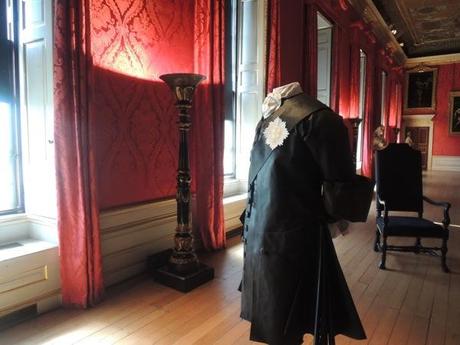
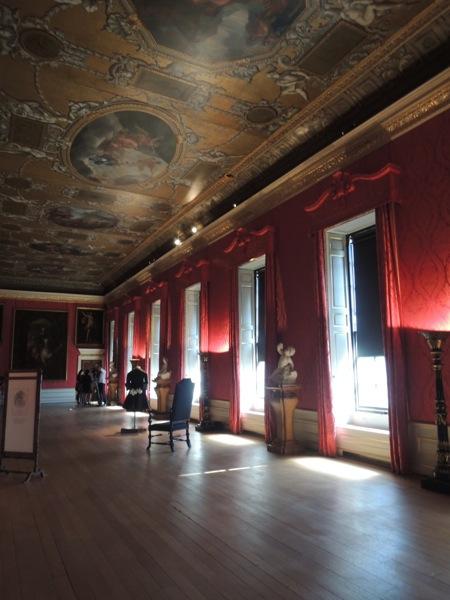
I have to say that I thoroughly enjoyed my visit to Kensington Palace last week – there was something so romantically melancholy and compelling, perhaps even bittersweet, about the sensory narrative set up by the Historic Royal Palaces team – from the evocative music that filled each room, conveying either the stately dignity of the Presence Chamber to the light hearted frolicking of a long dead princess in the Cupola Room to the final sadness of the bereaved King to the wonderful ‘smell map’, which could have been so gimmicky but instead really brings the different rooms to vivid life with such wonderful evocations as the perfumes worn by the court ladies, the snuff and wine consumed by the gentlemen, the rosin rubbed on to the violin strings in the Cupola Room and the logs burning in the Privy Chamber.
Whereas I felt like the display at Hampton Court Palace evoked the darker side that lay concealed beneath the glittering, sophisticated veneer of the early Georgian court, the one at Kensington is rather different and I thought conveyed a more light hearted, pleasure seeking establishment presided over by a likeable King and his charming, erudite wife. As curator, Deirdre Murphy says: ‘We’re delighted to be able to introduce our visitors to Queen Caroline, one of the cleverest and funniest Queens Britain has ever had. The newly restored King’s State Apartments will provide a spectacular setting for visitors to experience life at the lively court she cultivated in the 1730s. From the gambling and dancing, to the gossip and scandal, we’ll explain why this glittering court ushered in a new era of celebrity in eighteenth century London.‘
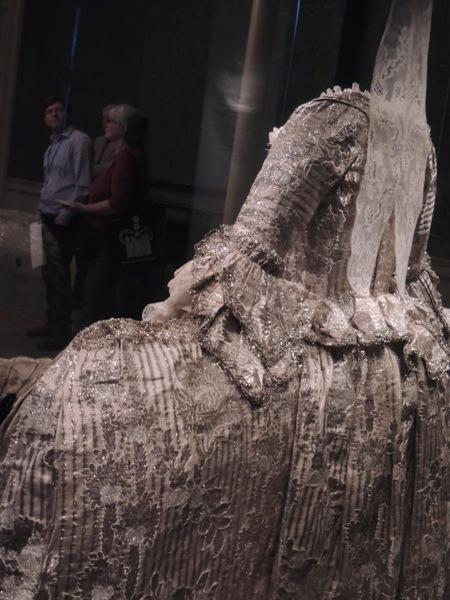

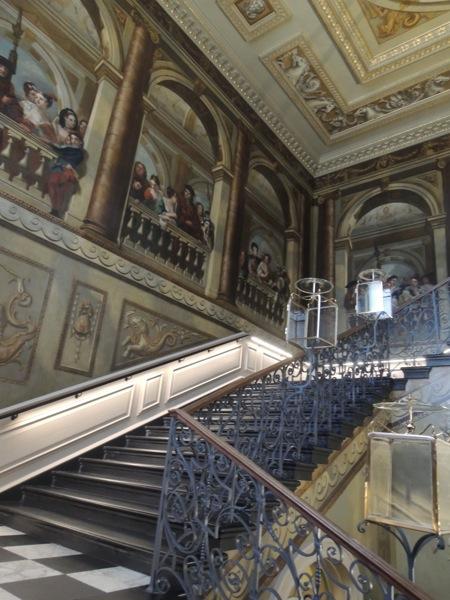
The Glorious Georges will be in residence at Kensington Palace for the rest of the summer and to accompany the superb display there will be the usual programme of special events for all the family from a children’s sleepover on the 16th of May, a fashion show to salon evenings. This is definitely a great time to invest in Historic Royal Palaces membership, which gives access to even more special events and lectures (as well as the wonderfully cosy ‘member’s rooms’ at Hampton Court Palace).
MANY thanks as always to the Historic Royal Palaces press team for inviting me along!
******
Set against the infamous Jack the Ripper murders of autumn 1888 and based on the author’s own family history, From Whitechapel is a dark and sumptuous tale of bittersweet love, friendship, loss and redemption and is available NOW from Amazon UK and Amazon US.
‘Frothy, light hearted, gorgeous. The perfect summer read.’ Minette, my young adult novel of 17th century posh doom and intrigue is now 99p from Amazon UK and 99c from Amazon US. CHEAP AS CHIPS as we like to say in dear old Blighty.
Blood Sisters, my novel of posh doom and iniquity during the French Revolution is just a fiver (offer is UK only sorry!) right now! Just use the clicky box on my blog sidebar to order your copy!
